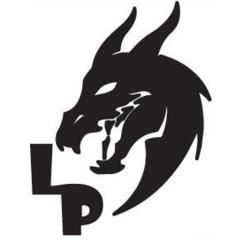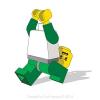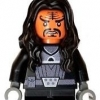Search the Community
Showing results for tags 'beginner'.
Found 17 results
-
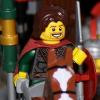
A Quick Start Guide to Brethren of the Brick Seas (BoBS)
Bregir posted a topic in Brethren of the Brick Seas
So you think you'd like to dive into the world of the Brick Seas, however there is so much to read and so many rules that you are not even sure where to start! Fear not, it's actually quite easy to get started and the community here is really friendly and will help you along each step of the way! Never be afraid to ask questions in the introduction thread or any of the faction threads (linked below). For now let's look at exactly what you need to do to sign up and get started in one post! Step One: Choosing a Faction The first step is also one of the most important - choosing the faction that your character will pledge allegiance to. While you are never limited to only building scenes within your faction's territory (in fact many challenges may require you to build in other factions), faction choice will impact your role in BoBS. There are many things to consider, what style suits your current Lego collection, what interests you, which part of the game you wish to focus on etc. etc. Even the number of currently active players in each faction may influence your choice. The most important thing however, is to choose a faction that you are going to enjoy and be motivated to build for! There are four playable factions in the game, let's have a brief look at each one to assist in your choice. Corrington Primary Lego Influence: Imperial Guard (Red Coats) Primary real world influences: Great Britain, Renaissance Sweden and enlightenment era Denmark-Norway The Basics: Science and the enlightenment are main national characteristics for Corrington, and their main source of income is from their strong merchant fleet. A strong navy is required to protect their maritime mercantile interests and this tends to be their military focus. Corlander's strive to bring order and structure to the world. Typical Quote: "That flower is beautiful. We must conserve it and bring it to the national museum." If you see your sigfig crawling through the jungle to find a beautiful flower - join Corrington. Read more: Corrington thread Eslandola Primary Lego Influence: Imperial Armada Primary real world influences: Spain, Portugal and the Netherlands. Also some of the merchant republics such as Venice, Milan and Lübeck. The Basics: Trade and profit are the main national characteristics for Eslandola. Although nominally ruled by a King, a trio of very powerful trade companies are the power brokers and have recently established a republic in the colonies. Their main source of income is through vast property holdings and they have developed a strong army and navy to protect and aggressively expand their interests. Typical Quote: "Enough profit for the day? Don't make me laugh!" If you see your sigfig crawling through the jungle to find a shiny city of gold - join Eslandola. Read more: Eslandola thread Oleon Primary Lego Influence: Imperial Soldiers (Bluecoats) Primary real world influences: Pre-revolutionary France and Imperial Austria The Basics: The main national characteristics of Oleon are deeply rooted in their strict adherence to the religion known as 'The Faith' which together with the strong aristocracy form strong bases of political power. A great love for art and culture as well as ancient artefacts is also a national characteristic together with their famous wine making skills. Like Corrington they have developed a strong merchant fleet and navy. Although historically Oleon and Corrington have been bitter rivals, relations have been improving of late. Typical Quote: "May Zeus and Poseidon guide your journey." If you see your sigfig crawling through the jungle to find a mystical artefact - join Oleon. Read more: Oleon thread Sea Rats Primary Lego Influence: Pirates Primary real world influences: Real world Pirates and free settlements such as Nassau. The Basics: The Sea Rats are basically anyone in the new world who owe no allegiance to any of the old world empires. These men and women go their own way. Some are fierce pirate lords, making a living terrorising the Brick Seas, others are peaceful merchants who refuse to bend the knee to any King, and some settle down at a romantic place in the colonies. The Sea Rats are a loose confederation with no central authority, whose binding characteristic would probably be the fierce defence of their freedom to live life completely on their own terms. Typical Quote: "What? You've never heard the tales of the reckless Benjamin Morgan? Benjamin, brave and bold? Dread Pirate Captain Morgan, on his legendary ship, the Queen Annetta's Revenge? Morgan the Moray?" If you see your sigfig crawling through the jungle... because it has an utter disregard for the rules - join the Sea Rats. Read more: Sea Rats thread Once you have chosen a faction, you are ready to move to step 2 and start building! (Next post)- 32 replies
-
- new
- walkthrough
- (and 4 more)
-
Hi everyone, I'm Arthur, but my friends generally call me Thur. I'm a 38 year Dutch guy, married and father of 2 (boy and girl). Since my son reached the age of 4 a few months ago, his interest switched from Duplo to Lego and specifically City. He might me a bit stimulated by his dad ?. This re-ignited a long lost love for Lego within me, something many of you will recognise. In daily life I'm a purchasing manager for a wholesale group in beverages. I love to practice speed cycling to empty my head and keep my body in shape. I've become member of this forum to fuel the fire in me and learn more on to makee nice Lego buildings and cities. I'd love to make a nice city in the near future and hope to instill the love for Lego in my son and daughter ? I haven't got much experience in building MOC's, as a kid I was a real instructions builder. So I've got a long way to go to create buildings similar to the ones I see around. I'd love to go on that journey with some of you! Greets from the Netherlands! Thur
- 2 replies
-
- netherlands
- dutch
-
(and 2 more)
Tagged with:
-
Hello everyone and thank you for letting me in :) I'm a 49 yr old guy from Norway that has not built much Lego in my life unfortunately, But I *really* see the value in it for my 9 yr old son, and I'd like him to spend less time gaming and more time building Lego. So I went online and bought some Lego motors, axels, bushings and gears, but I'm not very good at this (crap infact :D ) and it seems we both could use some beginner-tips on where to start. I'm looking for VERY simple builds/tips perhaps combining two motors somehow ? (I tried to search on these forums and keep ending up in massively complex builds that makes my jaw drop but alas) :) Thanks again folks!
-
Hi all, given that I'd like to build my own modulars, I need to learn how to use a 3D program and my choice has been Stud.io. Do you know if there is a guide, a 101 collection of tips, tricks, and hints or beginner projects to follow for a newbie? Thanks in advance!
-
Hi all, surely it is a dumb question, but how to start the AFOL carrier path? Playing with my sons, mostly City sets, is growing on me the Lego passion! Now, what is the best way to start the hobby? Given that I don't want to use the kids' stuff I have no bricks but the Saturn V Apollo set. What are your suggestions? Thanks in advance for your support. Ale
-

Secret Recipe in making decal customs more legit?
remarksss posted a topic in Minifig Customisation Workshop
Hey guys, newbie heree. Im just starting to make decal customs and realized that the decals i made looks very paper-ish. Do you guys have a secret recipe for it to look more legit? likee it really looks like it has been printed? -
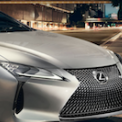
Beginner Car Chassis - Lego Mindstorms EV3
StudRobotics posted a topic in LEGO Technic, Mindstorms, Model Team and Scale Modeling
This is my simple Lego car chassis for Mindstorms and Technic beginners. Features Rack-and-pinion steering Full independent suspension 1:3 gear ratio driven to rear differential I built this chassis as both an experimental project but also an educational one to not just me but people starting to make their own cars with Mindstorms and Technic. If you're looking for a chassis design that may work for the build you're creating (a sports car, sedan, or small truck) then I hope this helps you and I would look forward to seeing the finished result. -
Whether we like to admit it or not, our photo gear does make a difference in our work. Not only can better gear produce better results, but having the right equipment can make the whole process more enjoyable. After all, we want to make comics and films, not mess around with our camera trying to get it to do things it was never intended to do. With this in mind, you may realize you need to upgrade your camera. You may have questions about features to look for, what all the numbers mean, and how much do you really have to spend? The goal of this tutorial is to take some of the mystery out of choosing a camera. I will be focusing on features needed for getting clean photos specifically to be used in creating films and comics, however, you should end up with a camera that is good for "normal" use like vacations and such as well. What Kinds of Cameras are there? There are quite a few different types of cameras available. Most likely anyone reading this has at least one of these and I'm willing to bet most of us have more than one. Before we talk about what to look for in a camera, I'm going to explain the different types and you'll see why the rest of this article will not be focused on the first three in this list. What does that leave us with? Well, now we have "Compact", "Advanced Compact" and "dSLR". In all honesty, if you can't afford at least a "Compact" camera, you should really start a plan to save the money for one. Anything lower than that will just mean you have to work harder and will most likely never get to the quality of photos that you want. It's a harsh reality, but sometimes we must spend money on the gear. Let's have a look at price ranges, they vary quite a bit depending on brand and features. It's going to be up to you to decide what features and price you are willing to handle. I'll be covering the most important features after this. I'm covering price first because if you don't decide on at least a price range first, you may get stuck in trying to get the "best" and end up not buying anything at all. I do want to make one thing very clear: Do Not Buy Based on Brand . No brand is worth your loyalty, you need to pick a camera with the features, feel, and price point for YOU not because your friends use Canon or you use to have a Sony or you heard Nikon is the best from Ashton Kutcher. Let's Talk Features Photographing for either Brick Flicks or Comics all comes down to taking still images of LEGO scenes. Luckily that means we don't have to consider different features for each thing. Right, so there are a lot of features of modern digital cameras. I'm going to create this list with the "Most Important" features for our purposes at the top, moving down to the "Least Important". I will not cover every possible feature of a camera because, honestly, most features that are hyped by advertisers do not matter at all for what we are doing here. When considering cameras, you can find most of these feature details for the camera on Digital Photography Review as well as staff and user reviews, sample photos, and lots of comments. Flash Control Number One, you need to be able to turn off the flash. A bare flash with LEGO elements always results in sub-par photos. Having a "hot shoe" is also very helpful for adding an external flash and for other uses such as holding "flags" and "reflectors". Macro Mode Unless you really enjoy cropping photos, you'll want to get close to your figures. Take a look at the "minimum focus distance" in the features list for the camera you are considering. The smaller the better, I would stay away from anything over 10 inches though. Manual Mode Most of these types of cameras will have a manual mode of some sort, but not all are created equal. If the controls for manual aperture and shutter are buried in menus, stay away from the camera. You will have nothing but frustrations with these, it's much better if you can find a camera with these controls on a dial or a combination of dials. One of the other things to look for is true manual control for ISO, which should always be set at it's lowest setting but auto mode likes to set it high). Being able to control the aperture and shutter and ISO manually is also very important for getting a consistent image and avoiding "blinkies" when editing your images together in an animation. Manual Focus This can be handled a few different ways. With anything under dSLR, it is unlikely you'll get a true manual focus (like manual on the lens or even choosing a very precise focus point). However, some advanced compact cameras do have the ability to choose a focus point. This is very useful because (as discussed in the Depth of Field lesson) sometimes we want to give focus to only one item in the scene and we don't want to always have that object in the dead center of the frame or the "closest" to the camera. When looking up specs for the camera, look for keywords like "Manual Focus", "Multipoint Focus", and "Selective single-point" (the last one is the very best). Filter Compatibility With a dSLR, you'll be able to put filters right on the lens. This can be very useful for in-camera effects (like using a star filter) and for corrections (such as Circular Polarizer). The more you can do in-camera, the less you have to fight with in editing. For compact and advanced compact cameras, the manual and tech specs should tell you if it is possible to use filters - usually this will require an adapter collar (sometimes even included with the camera). Megapixels This is dangerous ground. It's a huge selling point for many cameras, touting more and more MP. The thing is that the size of the sensor isn't getting any bigger, so they are cramming more and more pixels on the same size sensor. What does this mean to you? It means that the more pixels that are packed on that tiny sensor, the more likely you are to get "noise" or "grain" in your images. When looking at the reviews for the camera you are considering, take a close look at the "High ISO" and "ISO" performance, there are usually 100% crop images in this section of the review. The thing you want to understand about noise in your images is that it makes it difficult, if not impossible, to get a clean background removal. So if you want to drop in a digital background, something like that, you'll need to start with the cleanest photo possible. Another thing to consider with MP is that for this type of work you don't really need more than 8MP. For the most part, we are only displaying these things online and even then they are cropped down to no more than 1MP in actual use (not always, but usually). Even if you were printing a page of your comic, you are still looking at each image in the page being very small relatively speaking. Tripod Mount The ability to mount your camera on a tripod is extremely helpful, especially in the case of animations. I'd say most of the cameras in this range will have a tripod mount, but if it comes down to one that does and one that doesn't, pick the one that does even if it costs a bit more. Well that about covers the features that are important for our purposes. It will take some research to find the right camera, but if you take the time to do it right you will be much happier. The more work you can get done in camera the better. I'd rather spend 30 minutes setting up a shot and 5 minutes in post to crop it than spend 5 minutes setting up a shot and 2 hours in post fixing it, but that does take a camera with certain minimum of features.
- 1 reply
-
- beginner
- what to buy
- (and 4 more)
-
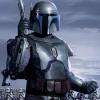
New to star wars minifigure collection - Any help / beginner tips?
Marshgray posted a topic in LEGO Star Wars
Hello, I just recently found my old Death Star (Set 10188) and saw all of my old minifigures I used to have. Over the past couple of months I've been getting back into Star Wars and I thought a good way to have something to show for it is a minifig collection. I started looking at websites like Bricklink and even Ebay to find minifigures and felt intimidated by the choices and price. So far I have 29 minifigs and one (an old Boba Fett) coming in the mail. I am 16 and just recently bought a car and have to deal with fixing it and gas, and I am kind of limited by how much money I can spend on minifigs. Should I just slowly add onto it one minifig at a time, or buy battlepacks or sets of minifigures? All help is greatly appreciated, thanks! A picture of my set so far (might be low quality, black figure up front is a protocol droid and in the back is Darth Vader and Darth Sidious)- 18 replies
-
- minifigure
- beginner
-
(and 2 more)
Tagged with:
-
Hey! Dannylonglegs here! I have never used LDD before, but circumstances have arisen so that I believe I may need to finally download it. So, my question is: Where do I get it? When I do get it, it sounds fairly straightforward to use, but how much space does it take up? After I make a digi-moc, what do I do next? How do I show it or share it? Anyone know answers to my nooby questions? ~Insectoid Aristocrat
-
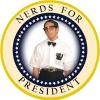
Help - which LEGO CAD software is best for Technic?
nerdsforprez posted a topic in Digital LEGO: Tools, Techniques, and Projects
Hello All, First time poster to this specific area, longtime poster to the Technic genre..... Forgive me if there is already a post that answers my question, but I could not find one. I have never created anything in Lego with software. Always preferred to just work with the tangible blocks. However, now wondering if I am missing something and that Ldraw or LDD can help add something to my builds. Problem is, there appear to be so many programs out there.... which is the best? Which is the standard? What are the pros and cons of each system. I work primarily in Technic parts, so I don't know if one program is better than others for this genre. Is there a thread that describes all this stuff to beginners like myself? I also know there are other programs out there....just not sure which are the best. Any help would be greatly appreciated. Thanks! -
I am into building realistic builds but have a low budget below is a basic model I made with random spare pieces Links here----- https://docs.google.com/file/d/0B0LIffC6GUIYQ0cwQjYxLU9JRjg/edit?usp=docslist_api And here------ https://docs.google.com/file/d/0B0LIffC6GUIYZkd1V0N2RGkyNEk/edit?usp=docslist_api
-
I've been building all kinds of Lego (and Lego-compatible) brick sets this year, the space shuttle, some architecture sets, a number of creator and town planes, monuments (by other brands), the BTTF Car and Ecto 1, and some big Technic sets. I have never done any of the Creator Modular sets- wondering if anyone has an opinion on the best one to start with?
-

GBC - Balls and sets where to start?
DS613 posted a topic in LEGO Technic, Mindstorms, Model Team and Scale Modeling
I am afol and I own a few lego sets, and I am very interested in starting GBC bulds but I dont really know where to start. Any help would be nice. What sets to buy to get started with GBC builds? where to get the basket and football balls? where to get the gears? where to get the power? Web sites etc. Thanks in Advance DS -

-Advice- What is a good project to use to "break" into Pirate
Demetreous posted a topic in LEGO Pirates
So, I am just in awe when I see some of the MOCs on this forum... I'd really like to get into building some awesome ships, lighthouses, and ports eventually... But I'm not quite there yet... So, what do you think a good "entry-level" MOC to make for this forum would be? I'm thinking about something that is just on the border of "advanced," yet not too complex. ~Deme -
Working with LEGO has always been fun, but LEGO is shiny and more often than not, there is glare from a light source when we photograph them. There are several ways to remedy this. One option is to place the lamp in a different location so the light reflected is hidden from the lens of the camera. Another option I've heard of is to use pencil erasers to dull the shiny brick. The least invasive way to remove glare from your set is through a circular polarizer. What is a Circular Polarizer? A circular polarizer (CPL) is a filter that only allows a certain angle of light to pass through it. Here are two articles that go into depth of the physics behind a polarizer. To put it very simply, scattered light passes through the filter and either the vertical or horizontal band of light will pass through. The angle of which the source light hits your object is important, and usually a 45 degree angle to the object will get you the best results. Most circular polarizers are also Neutral Density filters (filters that darken the shot without affecting color) and are usually graded to stop down an image by 2 stops. So if you have an f/stop of 4 on your lens, it will result in an f/stop of 8. You will need to add more light if it makes the scene too dark. A CPL will not completely remove a glare, depending on the angle and strength of the light, but it will cut it down a lot. This is the circular polarizer I used for this topic. I had a better one (which had a smoother rotating ring), but that got stolen . These things range from $6 to $200. The one I used is from the lower end. The price doesn't affect the effect, but you'd probably get a better quality, longer lasting product going for a medium to high range polarizer. A side view of the polarizer. Here you can see that this is a two piece filter, one that screws onto the lens and the other that can rotate freely, changing the angle of light that passes through. Here are some photos of the circular polarizer in use with LEGO pieces. The first picture is to demonstrate how much light is cut out from the neutral density aspect of the filter And now it's not over-exposed. The next two pictures will demonstrate how well the CPL removes glare from LEGO pieces As you can see in the above pictures, the glare on the eyes and nose, as well on the side of the black body, has been removed significantly. You can also see that the glare on the seams of the LEGO bricks and around the studs on the floor has also been removed. Two more examples: In the previous examples, I showed you how the CPL worked with figures and objects. In this next example, I'm using the very shiny bricks in the background. Straight on, like in the previous pictures, provided little effect in removing the glare. Changing the angle of the set, with the source light directly in front produces a dramatic effect in removing the glare. I've recorded a video of the CPL in action so that you can see exactly is happening when the filter is rotated. Take note of the frog, the eye of the panda, the handlebars of the motorcycle (and the blue plastic of it, as well), and the minifigure's hair, head, and leg. The back wall and LEGO studs are also affected, but not as much as the other pieces. Like I noted in the above example, the reflections in the back wall are hardly removed by the CPL, which you can clearly see my hands rotating the CPL on the camera lens. Sorry for the shakiness. VIDEO In conclusion, the CPL is not a necessary part of your photography set up, but it does help reduce unwanted glare/reflections on your set. Without the glare, the LEGO pieces are no longer washed out and have more contrast. Obviously, not every camera will have a CPL that will fit on it. There are other ways to attach a CPL to the camera and different types of CPL's (like a square plastic gel, like the polarized lenses of 3D glasses). Just holding it with your hand will work just as well,. One last interesting tid-bit about the polarizer: If you put two CPLs in front of each other, it is possible to completely block out light.
-
- Brick Flicks & Comics Academy
- photography
-
(and 5 more)
Tagged with:
-

Lesson: Character and Theme 1: Basic Story Arc and Characters
Hinckley posted a topic in Brick Flicks & Comics
Theme Simply stated, the theme of a story is the point the author is trying to get across. What does your story say about life? It can be a simple, open-ended theme. For example, the theme could be about humor. The author could be trying to remind everyone to have fun in life, and try to help them along by making them laugh or giving them good ideas to have fun in recreation. Or it can be a more complicated concept like trying to convey a point that makes the reader realize that over-automation can lead to killer results for those who rely too much on technology. Character An author should have a good idea of how their characters would react to any situation. Their characters should have unique reactions to each situation, some varied, some nuanced. Getting into small details of a character's personality takes a lot of time and in-depth thought. This usually happens organically and it's good to keep a word doc with character info that you can easily access and jot in notes about your characters. Let's start very generally with the definition of a character, in terms of a comic's theme. A character's story is often described as a through-line. The through-line is the characters journey. How does the character change from the beginning of the story to the end of the story? The change the character goes through should convey the story's theme. Lesson 1 Simply state your story's theme. Analyze how you plan to demonstrate this viewpoint with a basic story arc. Choose three characters from this story and detail how they will change from beginning to end. Compare these characters' through-lines to the comic's theme and explain how their journey demonstrates your theme. Start a new topic to complete this lesson. Ask any questions you have about the lesson in the topic you start. You can always update the first post with new ideas or changes to your lesson's answer. Have fun!-
- Brick Flicks & Comics Academy
- beginner
-
(and 3 more)
Tagged with:


